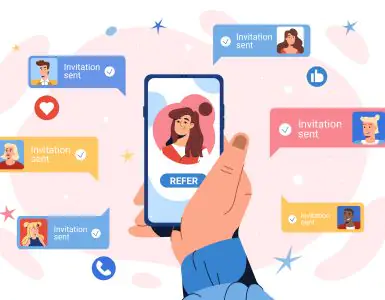You’ve found the perfect fit for that essential job opening, but now the real work begins. One of the best ways you can ensure a smooth onboarding process and keep employee satisfaction high is to treat the first few days of work with the utmost importance.
Start by following these tips on making the new hire feel welcome. They’re designed to set the tone for future work and ensure the new employee feels like part of the team.
8 Ways To Make A New Hire Feel Welcome
Some of the things you’ll do will occur on the new hire’s very first day, but others will happen even before that. Plan each step in order so that you have time to get each detail right—before the employee steps foot in the door. Enlist your department leads and legal teams to review the plan to see where you can improve before you try it out.
1. Send A Welcome Email
Email is the most important method of business communication, and sending a quick welcome message can show your enthusiasm even before day one. There’s sometimes a long pause between the “you’re hired” email and when they actually begin, so this message can keep their enthusiasm high. It will also let them know they’re a very important part of the team.
But what should you write? Consider our simple welcome email template:
Hello [employee],
Welcome to [company name]!
I’m so excited for your first day next week and wanted to reach out to see that you have everything you need to begin. You’ll want to bring [list of items, such as a photo ID or work permits] when you come in. [Include additional instructions for arrival here].
If you have questions in the meantime, please don’t hesitate to email me or call at [work number].
We can’t wait to work with you!
[Your Name]
2. Prepare An Onboarding Document
Don’t skip this step! An onboarding document is one of the more crucial tools for a new employee, as it covers much of the information they will hear the first day but may be too overwhelmed to retain.
It sets the tone of communication and gives them easy answers to the most common questions a new hire may have. It also gives them an expectation of how their first day, week, and month will look. Knowing the plans in advance can ease new-hire anxiety and make them feel informed and valuable.
The document should include:
- The tasks their new role includes, including those that they will need extra training to accomplish
- The plan for the first day, week, month, and year
- Administrative must-knows, such as links to the company intranet site, logins, and access codes
- Contact information for possible questions and future problems, such as IT, human resources, and payroll
- Contact information for their teams, including one peer who has agreed to be an ally in the workplace
- A to-do list the new hires needs to complete at the end of orientation (such as insurance enrollment, W-4s, training videos, or workstation setup)
Also make sure to provide your employee handbook so they can learn about the office dress code and other relevant information.
3. Establish A Schedule
There’s so much uncertainty for a new hire. Why not alleviate some of the tension by providing a play-by-play of the employee’s first day and coming week? Give them a schedule of exactly how they’ll spend their time, so they won’t have to guess. Schedule plenty of “free time” to give them time to eat and use the facilities—or to simply sit and absorb all of the new information they’re receiving.
Be sure this schedule explains any planned learning sessions, and what materials or information they’ll need to bring with them. Another helpful hint is to use this step to provide training videos and learning modules.
4. Get The Paperwork Out Of The Way
While you’re tackling the “boring” stuff, make sure paperwork is priority #1. It can put you in a position to start processing all of it right away, and it makes the new employee feel like they are doing something, instead of simply taking in new information.
5. Show Them Their Workspace
Before the new employee gets to the office, ensure that everything is set up, from their computer to any necessary supplies (don’t simply direct them to an office supply closet!). Enlist the help of IT to active logins and passwords, and to set up their email address and chat apps.
If applicable, remove any reminders of the previous employee, including loose items that may be lingering in desk drawers. Clean and sanitize accessories, such as computer keyboards and phones. Finally, add a few simple touches that say “welcome,” such as a company swag bag with a logo T-shirt, water bottles, and snacks.
6. Introduce The Team
Ideally, the new hire will start on a day that’s not overwhelming for the rest of the team, but that’s not always possible. If you can, set aside some time for the other employees to make an introduction. Also, prioritize meetings with direct managers and those who will be in day-to-day contact.
If time and budgets allow, set up a team lunch or quick coffee for the core team members to socialize with the newest employee. Be sure this is communicated well ahead of time, too, so co-workers aren’t left scrambling to make time.
If a team outing doesn’t work for a large group, consider asking a manager or team leader to provide doughnuts and coffee in a conference room during the afternoon break. At a minimum, these 15-minute face-to-face “meet and greets” with key players should be arranged within the first week.
7. Assign A Mentor
It can be difficult starting a new job, even if you’ve been formally introduced to many people. Assigning a go-to “buddy” can help the new hire feel that they are supported, and it can potentially reduce awkward back-and-forths between HR and the employee.
The mentor should be someone willing to take on the job. Don’t pass it off on someone simply because they are in a related department role. Give the mentor some budget for grabbing coffee with new employees so that they can get some time away from the office to chat about any concerns or questions in a neutral environment.
8. Ask For Feedback
Before the end of the first day, ask the employee how things are going. Do they have questions? Concerns? What could be better? Don’t expect them to be completely open about everything this soon in the relationship, but use the opportunity to get an idea of how they are feeling. Be sure to check in again regularly (weekly, to start).
While it may not be pleasant to hear about anything negative, any new hire concerns should be handled promptly. This will go far in smoothing over any regrets an employee may have after just a short time, and it will prepare you to do better with the next hire.
Making An Excellent First Impression
Remember, you chose this candidate because you thought they were a good employee for your company, and because they felt the company offered something of value for their career. A disconnect between what you presented in the hiring process and what you show them on their first day may cause them to reconsider their decision. Keep your new hires feeling confident in their choice by putting effort into their first few weeks and showing them a genuine and warm welcome.
Welcoming a new hire is just one part of an often rigorous hiring cycle. Using an applicant tracking system like ours can free you up to do more of the hands-on relationship building expected by new employees. Learn more about how Comeet can help.





























